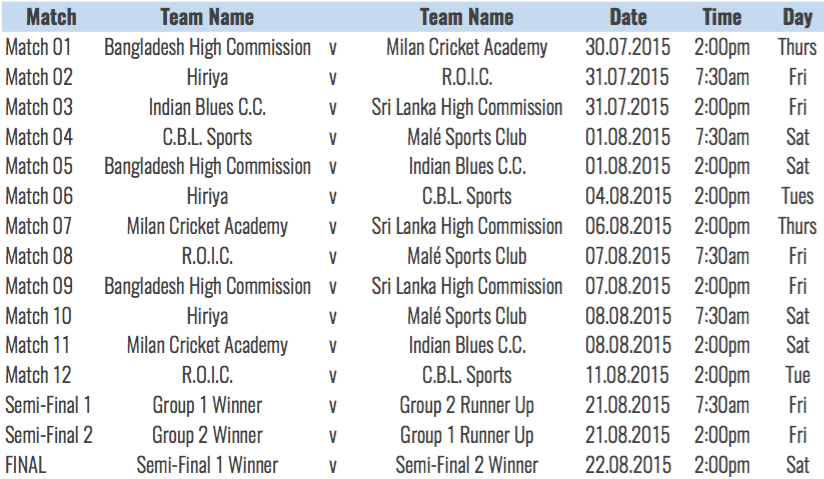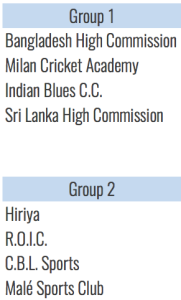This years STO T20 Blast is due to begin on 30th July. Excitement is building as we will see a record number of teams participating. Come on down and be guaranteed drama in the 11th annual tournament.
Applications for teams wishing to play in this years STO T20 Blast have closed as of 20th July 2015.
View the live Tournament Results, Tables and Player Statistics here
Groups
Match Schedule

Tournament Rules
T20 cricket is a form of cricket that was introduced in England in the year 2003, mainly with the aim of making the game more interesting and attracting more audience. Though it is similar to the traditional cricket game to quite an extent, there are certain differences as well. Most of these differences arise from changes in the rules and format of the game.
T20 Cricket Rules
General Rules
- In a single innings, each of the bowlers can bowl a maximum of only one-fifth of the total overs i.e. 4 overs in a total of 20 overs.
- If a bowler ever delivers a ball overstepping the popping crease, it is a no-ball. The batting team gets one run for the ball and the next delivery is a free hit. In other words, in the next ball, the batsmen can only be dismissed through a run out.
- If either of the umpires believes that a team is wasting time, he can award a five-run penalty, at his own discretion.
- In a normal T20 game, the interval lasts for 15 minutes. However, in a reduced-overs match, it can be cut to 10 minutes.
- If, and only if, each of the two teams has faced (or had the opportunity to face) five overs, will be a match deemed to have played.
- In each Twenty20 cricket match, one short-pitched ball is allowed per over.
- To calculate a team’s net run rate, the average runs per over scored by that team is deducted from the average runs per over scored against it.
Format
The format of a T20 match is quite similar to normal limited-overs match, only the number of overs for batting is just 20, just as the name of the game suggests. The game is played between two teams, each of them having a single innings of 20 overs. In the context of T20 cricket, there is a visual difference as well, though it is a pretty minor one. In T20, members of the batting team do not arrive from/retire to traditional dressing rooms. Rather, they have a bench, mainly a row of chairs, visibly in the playing arena, used for coming and going purposes.
Field Restrictions
- At the most, five fielders can be on the leg side, at any given point of time.
- In the first six overs of a T20 game, there cannot be more than two fielders outside the 30-yard circle.
- There can be a maximum of five fielders outside the fielding circle, after the first six overs end.
- The fielding team has to start bowling its 20th over within 75 minutes. If it fails to do so, extra six runs will be added to the batting team’s score, for every whole over bowled after the 75 minute-mark. In case the umpire believes that the batting team is wasting time, he may add more time to this.
Tie Deciders
There cannot be a tie in a T20 cricket game. If, and when, there is a tie by the end of a T20 match, it is broken with a one over per side – ‘Eliminator’ or ‘Super Over’. Each of the two teams nominates three batsmen and one bowler, to play a one-over per side.




